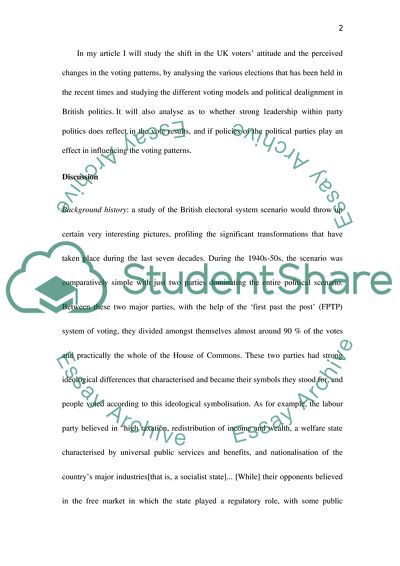Cite this document
(In Today's Britain People Vote Less on Who They are than on What They Coursework - 1, n.d.)
In Today's Britain People Vote Less on Who They are than on What They Coursework - 1. https://studentshare.org/sociology/1747949-in-todays-britain-people-vote-less-on-who-they-are-than-on-what-they-percieve-evaluate-this-statement
In Today's Britain People Vote Less on Who They are than on What They Coursework - 1. https://studentshare.org/sociology/1747949-in-todays-britain-people-vote-less-on-who-they-are-than-on-what-they-percieve-evaluate-this-statement
(In Today'S Britain People Vote Less on Who They Are Than on What They Coursework - 1)
In Today'S Britain People Vote Less on Who They Are Than on What They Coursework - 1. https://studentshare.org/sociology/1747949-in-todays-britain-people-vote-less-on-who-they-are-than-on-what-they-percieve-evaluate-this-statement.
In Today'S Britain People Vote Less on Who They Are Than on What They Coursework - 1. https://studentshare.org/sociology/1747949-in-todays-britain-people-vote-less-on-who-they-are-than-on-what-they-percieve-evaluate-this-statement.
“In Today'S Britain People Vote Less on Who They Are Than on What They Coursework - 1”. https://studentshare.org/sociology/1747949-in-todays-britain-people-vote-less-on-who-they-are-than-on-what-they-percieve-evaluate-this-statement.


